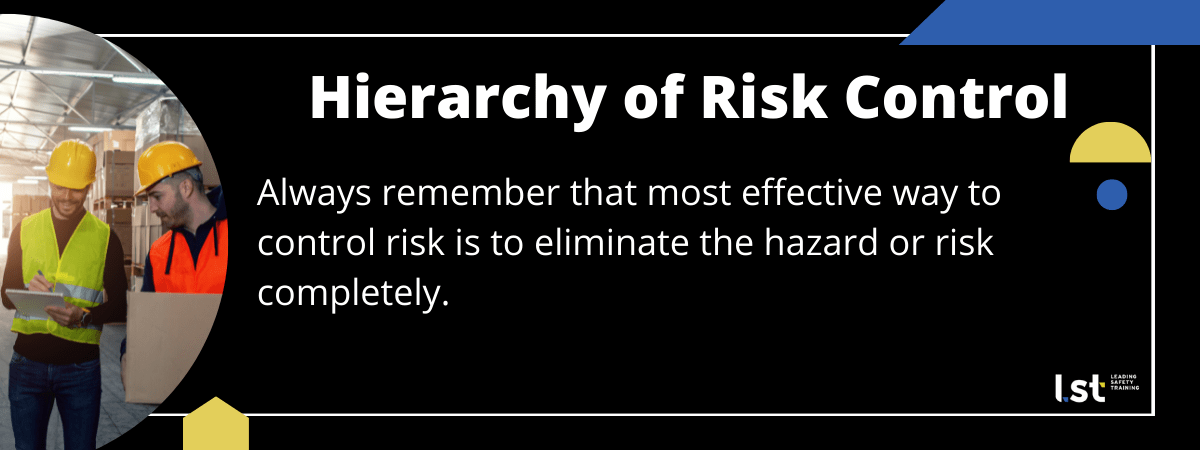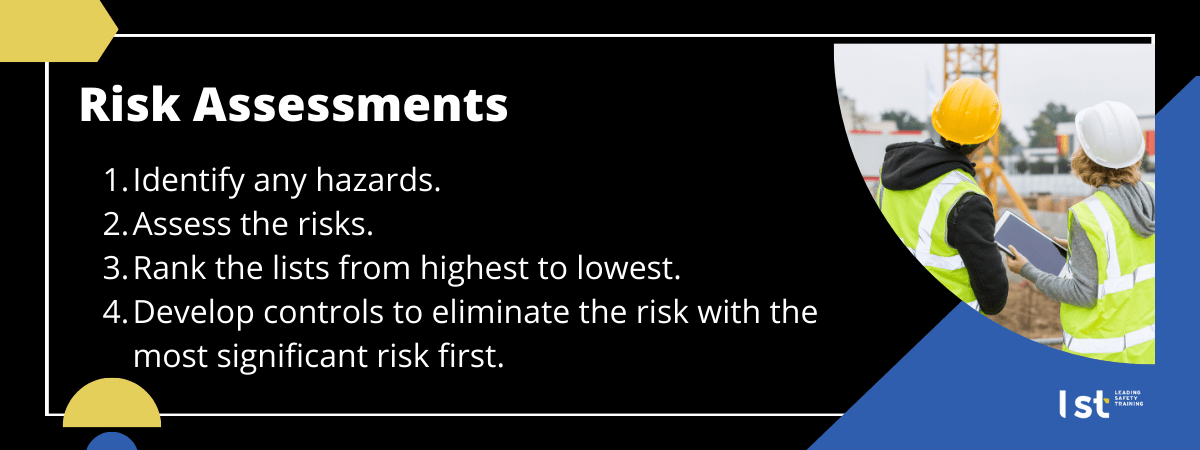Workplace health and safety (WHS) is an important issue in Australia. Every year, there are thousands of workplace injuries and even fatalities. This costs businesses millions of dollars in lost productivity, workers’ compensation claims, and legal fees. If you’re a business owner, you should definitely know how to manage work health and safety risks. By implementing a comprehensive WHS program, businesses can help reduce costs, and also protect workers, and improving morale.
WHS risks cover a broad range of incidents, including ergonomics, slips/trips/falls, manual handling, electrical safety, chemical safety, and more. There are a number of government agencies that provide guidance on WHS compliance, with detailed adherence to the code of practice risk management and to other standards including Safe Work Australia and the Australian Institute of Health & Safety (AIHS), employers can ensure the safety of their workers.
What is WHS in Australia?
Workplace health and safety or WHS refers to occupational health and safety in the workplace and covers all aspects that impact the health and safety of workers.
WHS in Australia is a national initiative to improve workplace health and safety. Why is work health and safety important? The initiative includes a range of programs and resources designed to help businesses and workers identify and manage risks. WHS in Australia is jointly managed by Safe Work Australia and the Australian Federal Government.
 What is the Legislation Governing WHS in Australia?
What is the Legislation Governing WHS in Australia?
The Work Health and Safety (WHS) Act 2011 is the key legislation governing workplace health and safety in Australia. The Act sets out the general duties of employers, employees, and other persons in the workplace, as well as specific duties for certain high-risk activities.
The WHS Act also establishes a range of enforcement powers for inspectors and representatives, including the power to issue improvement notices and infringement notices. Inspectors also have the power to undertake investigations and prosecute offences under the Act.
The WHS Regulations set out specific requirements for businesses in relation to a number of issues, including managing risks, providing information, and training, and maintaining records.
Guide To Health And Safety Risk Management
There is a four step guide to health and safety risk management
1. Understand Your Obligations
Understand your obligations under Australian Work Health and Safety (WHS) laws. These laws require you to take all reasonably practicable steps to ensure the health and safety of your workers and others who may be affected by your business or undertaking.
2. Identify Hazards and Risks
Identify hazards and risks associated with your business or undertaking. A hazard is anything that has the potential to cause harm, while a risk is the chance of that harm happening.
3. Evaluate Risks and Implement Controls
Evaluate the risks associated with each hazard and implement controls to minimise those risks. Controls can include engineering controls (such as guarding machinery), work practices (such as safe work procedures) and personal protective equipment (such as gloves and eye protection).
4. Review and Monitor Controls
Review and monitor the controls you have implemented to make sure they are effective. This may involve regular inspections of your workplace, as well as monitoring work practices and safety equipment. You should also review your controls if there are any changes to your business or undertaking that could affect their effectiveness.
Understanding the Hierarchy of Risk Control
The hierarchy of risk control is a tool that can be used to determine the most effective way to control a particular hazard or risk. It is important to remember that not all risks can be eliminated completely and that some risks will always remain. The key is to identify the risks that pose the greatest threat to workers and take steps to control them.
There are four levels of risk control that need to be considered when managing workplace safety. They are:
1. Elimination: Remove the hazard or risk completely. For example, instead of using a chemical cleaning product, switch to a non-toxic alternative.
2. Substitution: Change the hazard or risk for something less harmful. For example, using a power tool instead of a hand tool.
3. Isolation: Isolate the hazard from the person.
4. Engineering: Change the way the work is done to make it safer. For example, installing guards on machinery.
5. Administration: Changing the way work is organised to minimise the risk. For example, having better communication between workers and management.
6. Personal Protective Equipment (PPE): For example, safety glasses, hardhats, gloves.
The most effective way to control risk is to eliminate the hazard or risk completely. However, this is not always possible. The next best option is to substitute the hazard or risk for something less harmful. If this is not possible, engineering controls can be put in place to change the way the work is done to make it safer. If this fails, administrative controls and PPE can be put in place to change the way work is organised to minimise the risk.
What Is A Work Health And Safety Risk Assessment?
A work health and safety risk assessment is a process of identifying and assessing the risks to workers in a workplace. It includes an evaluation of the potential hazards and the consequences of exposure to these hazards. The purpose of a risk assessment is to identify controls that can be put in place to eliminate or minimize the risks.
There are many different methods that can be used to conduct a risk assessment. The most important thing is to use a method that is suitable for the particular workplace and the type of work being done. Some common methods include:
• Identifying hazards by walking through the workplace and looking for potential hazards
• Asking workers about their experience of hazards in the workplace
• Reviewing injury and incident records
• Conducting a task analysis to identify the hazards associated with each task
• Using checklists or questionnaires.
Are There Penalties for Violating WHS Standards?
Part of knowing how to manage work health and safety risks is understanding the repercussions for not following the standards.
Violations of the WHS Act can result in significant penalties, including fines of up to $3 million for companies and $600,000 for individuals. In addition, directors and officers of companies can be personally liable for breaches of the Act.
Who Is Responsible for Implementing WHS in Australia?
The Work Health and Safety Act 2011 (WHS Act) requires a person conducting a business or undertaking (PCBU) to take all reasonably practicable steps to ensure the health and safety of workers. This includes ensuring that risks to workers’ health and safety are minimised.
In Australia, the WHS Act is administered by Safe Work Australia, an independent statutory agency established in 2009. State and territory governments also have responsibility for enforcing the WHS Act within their jurisdictions.
Workers also have a responsibility to take reasonable care for their own health and safety, and to cooperate with any reasonable workplace policies and procedures relating to health and safety.
Employers must consult with workers about health and safety matters that affect them and involve them in decisions about how to resolve those matters. This consultation should happen as soon as practicable after the employer becomes aware of a matter that may affect the health or safety of a worker.
Managing Work Health and Safety Risks With Leading Safety Training
As a business owner or manager, it is your responsibility to ensure that your workplace is safe for employees, customers, and visitors. Workplace health and safety (WHS) compliance is essential in Australia to protect people from injury or death while at work.
Compliance with WHS laws is not only a legal requirement, but it is also good for business. A safe workplace is more productive and efficient, and it helps to create a positive culture within the organisation.
There are many steps that businesses can take to ensure compliance with WHS laws. These include conducting risk assessments, implementing safe work practices, providing training and education to employees, and having effective communication and consultation processes in place.
If you are unsure about your obligations under WHS law, seek professional advice from a lawyer or other qualified advisor.
Looking to upskill yourself in WHS? You’ve come to the right place. Delivering a wide range of occupational health and safety courses, Leading Safety is the most trusted RTO in NSW & Australia for Health and Safety Representative Training, White Card courses, and Due Diligence training. Learn more about how our courses can improve and safeguard your workplace by getting in touch with the Leading Safety team today.



